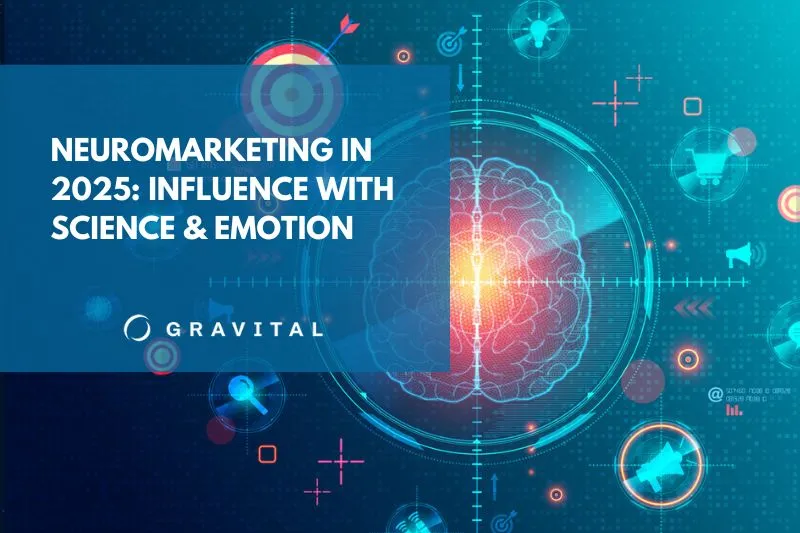In the early days of e-commerce, pioneering online businesses just needed a good website to succeed. With their hands full trying to make their websites as functional as possible, they didn’t give much thought to digital marketing strategies for attracting prospects, retaining customers, building brand loyalty and driving sales.
Obviously, times have changed dramatically, and well developed and executed marketing strategies are as important as functional websites. With so many options available, it can be challenging for brands and marketers to know where to focus their efforts.
The State of E-Commerce
E-commerce has seen explosive growth over the past decade, transforming the way consumers shop. The convenience of online shopping, coupled with an ever-expanding array of products and services, has led to an increasingly competitive environment. For e-commerce businesses, this means that simply having an online presence is no longer enough. To thrive, companies must continuously adapt their marketing strategies to meet changing consumer behaviors and preferences.
As more businesses enter the e-commerce space, standing out from the competition becomes more challenging. Consumers are bombarded with countless options, making it crucial for businesses to employ marketing strategies that not only attract customers but also keep them coming back. From search engine optimization (SEO) to influencer marketing, the strategies that drive e-commerce success are as diverse as they are powerful.
Top 20 E-Commerce Marketing Strategies
1. Search Engine Optimization (SEO)
SEO is the foundation of any successful e-commerce strategy. By optimizing your website for search engines, you increase the likelihood that your site will appear in relevant search results, driving organic traffic to your store.
Example: Use keyword research to identify terms your potential customers are searching for and optimize your product pages and blog posts accordingly.
2. On-Page Optimization
On-page optimization involves optimizing individual pages on your website to rank higher in search results. This includes optimizing meta tags, headers, images and content for keywords.
Example: Make sure that each product page has a unique title tag, meta description and keyword-rich content that clearly describes the product’s features and benefits.
3. Off-Page Optimization
Off-page optimization refers to actions taken outside your website to improve its ranking, such as building high-quality backlinks and engaging in social media.
Example: Partner with industry blogs or influencers to get backlinks to your site, which can help improve your search engine ranking.
4. Pay-Per-Click Advertising (PPC)
PPC advertising allows you to place ads on search engines and other platforms and pay only when a user clicks on your ad. This strategy can drive targeted traffic to your site quickly.
Example: Use Google Ads to target specific keywords related to your products so that your ads are seen by users actively searching for what you offer.
5. Blog Posts
Regularly publishing blog posts helps establish your brand as an authority in your industry, while also improving your SEO. Blogs can drive traffic, educate customers and promote products.
Example: Write blog posts that answer common customer questions, such as “how to choose the best running shoes” if you sell athletic footwear.
6. Social Media Marketing
Social media platforms offer a way to engage with your audience, promote products and build brand loyalty. Consistent, relevant content is key to maintaining a strong social media presence.
Example: Share user-generated content, such as photos of customers using your products, on platforms like Instagram and Facebook to build community and encourage others to make purchases.


7. Community Building
Building a community around your brand fosters customer loyalty and word-of-mouth marketing. This can be done through social media groups, forums or brand ambassador programs.
Example: Create a Facebook group for your most loyal customers where they can share experiences, ask questions and get exclusive access to promotions.
8. Content Sharing
Sharing valuable content across multiple platforms helps increase brand visibility and drive traffic to your site. This can include infographics, videos, blog posts and more.
Example: Share a how-to video on YouTube that demonstrates how to use your products, then promote that video across your other social channels.
9. Influencer Marketing
Partnering with influencers can help you reach a broader audience and gain credibility. Influencers can promote your products through their social channels, blogs or video content.
Example: Collaborate with a popular fashion blogger to feature your clothing line in a “what to wear this season” post.
READ ALSO: 7 Influencer Marketing Trends You Can’t Afford to Miss
10. Sponsored Content
Sponsored content involves paying a publisher or influencer to create content that features your brand. This content is often more trusted by audiences than traditional ads.
Example: Partner with a well-known lifestyle blog to write an article that subtly promotes your brand, such as a travel guide that includes your luggage products.
11. Email Marketing
Email marketing remains one of the most effective ways to communicate with customers, offering a direct line to share promotions, product launches and personalized offers.
Example: Send a weekly newsletter featuring your latest blog posts, upcoming sales and personalized product recommendations based on past purchases.
12. Newsletter Campaigns
A well-crafted newsletter campaign keeps your audience engaged and informed. It’s a great way to nurture leads and encourage repeat business.
Example: Use segmented lists to send tailored newsletters to different customer groups, such as first-time buyers, frequent shoppers or those who haven’t purchased in a while.
13. Affiliate Marketing
Affiliate marketing involves partnering with other businesses or individuals who promote your products in exchange for a commission on sales. This strategy can expand your reach and drive sales.
Example: Create an affiliate program that offers bloggers and influencers a percentage of sales for each customer they refer to your site.
14. Personalization
Personalizing the shopping experience increases customer satisfaction and conversions. Use data to tailor product recommendations, content and offers to individual customers.
Example: Implement a recommendation engine that suggests products based on a customer’s browsing history or past purchases.


15. Retargeting
Retargeting involves displaying ads to users who have previously visited your site but didn’t make a purchase. This strategy helps re-engage potential customers and drive conversions.
Example: Show ads featuring the products a user viewed on your site, encouraging them to return and complete their purchase.
16. Remarketing
Remarketing is similar to retargeting but focuses on re-engaging customers through email or other direct communication. This can include abandoned cart emails or special offers.
Example: Send an email to users who added items to their cart but didn’t check out, offering a discount to encourage them to complete the purchase.
17. Product Reviews and Testimonials
Encourage customers to leave reviews and testimonials, which can build trust and influence new customers. Positive reviews can be shared on product pages, social media and marketing materials.
Example: Highlight glowing customer reviews on your homepage to build credibility and encourage new visitors to make a purchase.
18. User-Generated Content (UGC)
UGC involves encouraging customers to create content featuring your products. This content can be repurposed for your marketing efforts, adding authenticity to your brand.
Example: Run a contest where customers share photos of themselves using your products on social media, with the best entries featured on your website.
19. Loyalty Programs
Loyalty programs reward repeat customers, encouraging them to continue shopping with your brand. These programs can include points, discounts or exclusive offers.
Example: Offer points for every purchase that customers can redeem for discounts or free products.
20. Referral Programs
Referral programs incentivize existing customers to refer new customers to your business, often by offering rewards or discounts.
Example: Provide a discount to both the referrer and the new customer when a purchase is made through a referral link.
A robust marketing strategy is essential for any e-commerce business aiming to thrive in today’s online market. By implementing a diverse range of strategies, you can attract new customers, build lasting relationships, and drive sustainable growth.
For more information about marketing strategies for e-commerce businesses, talk to us. We can help your online business grow and succeed.


